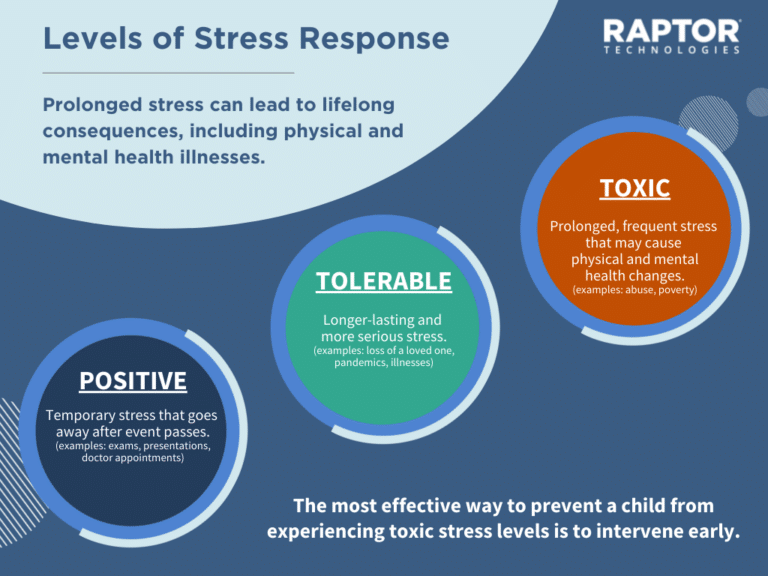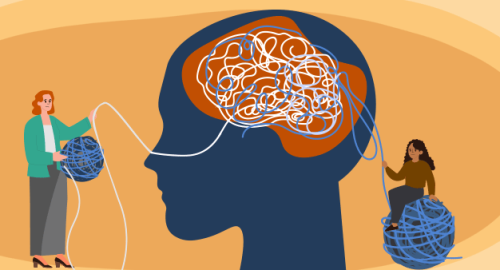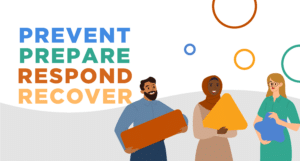Listen to this blog (6 mins)
It’s well known that prolonged stress of any kind can lead to mental and physical health issues for adults and children. Teachers, staff, and guardians can help students cope with stress by providing support, promoting wellbeing, and making sure students are partnered with mental health professionals as needed.
This blog discusses the three levels of stress response and why it’s so important for schools to intervene early and help students cope before things get out of hand.
What Are the Three Types of Stress Responses?

There are three levels of stress response. Each level—positive, tolerable, and toxic—impacts our body and how we cope with the stressful event.
- Positive Stress Response is the body’s response to temporary stress. The heart rate and stress hormone levels may increase, but then decrease once the event passes. Examples include being nervous about a class presentation or dentist appointment. Guardians, teachers, and staff can help students gain confidence and learn how to cope with stress by offering advice and support while the student faces the event.
- Tolerable Stress Response is the body’s response to longer-lasting and more serious stress, such as losing a loved one or experiencing the effects of a pandemic like COVID-19. The longer the body’s stress response is activated, the more damaging it can be to brain and body development. Caregivers can support children by helping them remain calm so the body can return to a normal state.
- Toxic Stress Response is when the individual experiences prolonged and/or frequent stressful events. These typically include physical or emotional abuse, neglect, and exposure to violence or other hardships. Children who experience toxic levels of stress typically don’t receive the support they need to help them cope with the event(s). Toxic stress has an increased risk of stress-related diseases and can alter how the brain and other organs develop. This can have lifelong consequences.
How Does Toxic Stress Affect Brain and Body Development?
According to the Center on the Developing Child (Harvard University), “The more adverse experiences in childhood, the greater the likelihood of developmental delays and later health problems, including heart disease, diabetes, substance abuse, and depression.” Toxic stress also makes it harder for the immune system to work, meaning children may have more respiratory illnesses and suffer with eczema or asthma.
Long-term exposure to traumatic events can also cause reduced attention spans, memory impairment, difficulty organizing and processing information, and overwhelming feelings of anxiety and depression. This can lead to lower academic performance, more suspensions, expulsions, and school absences, and increase the chance of the student dropping out of school.
How Can Schools Help Prevent Toxic Stress Responses in Students?
The most important—and most effective—way to prevent a child from experiencing toxic stress levels is to intervene early and reduce their exposure to extremely stressful conditions. This means that school staff and teachers must be trained to recognize red flags of a student in crisis.
Pre-K and kindergarten students experiencing excessive stress may complain of headaches or stomachaches and may start habits like thumb-sucking or playing with their hair. Elementary and middle school students may show behavior changes, like becoming irritable or defiant and having disruptive outbursts. High school students may isolate themselves, have strong emotions, or pick up negative coping mechanisms, such as drug use.
It’s important to also consider what a student may be experiencing outside of school. Imagine the following scenario. You have a student who is tardy at least once a week. It seems he is indifferent to his tardiness as he strolls through the front office to get his tardy slip. You are growing tired of his lack of responsibility, the disruption his tardiness causes other students and having to repeatedly give him detention.
Meanwhile, what you don’t know is that his mom has a substance abuse problem, which often forces him to first take care of his younger siblings and get them ready for school before he can even think about getting himself to school on time. Imagine how different this student’s life could be—and his younger sibling’s lives—if someone tried to really understand what is going on in his life.
How Can Schools Intervene Early to Better Support Student Mental Health?
These types of situations are hidden in plain sight. Schools must have mental health support services available to students. Mental health professionals focus on the individual student and help school staff better understand what challenges the student is facing. Once the school safety team understands the root cause of the student’s issue, they can then make sure the student receives the appropriate help to resolve it.
When a student’s situation escalates into threats or violence, it’s important mental health professionals and law enforcement work together. “In reality,” Dr. Amy Grosso, Director of Behavioral Health at Round Rock ISD in Texas, starts, “it takes both [SROs and mental health professionals] working hand-in-hand to really get to the bottom of what’s happening with our students and being able to keep them safe.”
Learn more about how SROs and mental health professionals can work together in our on-demand webinar.





